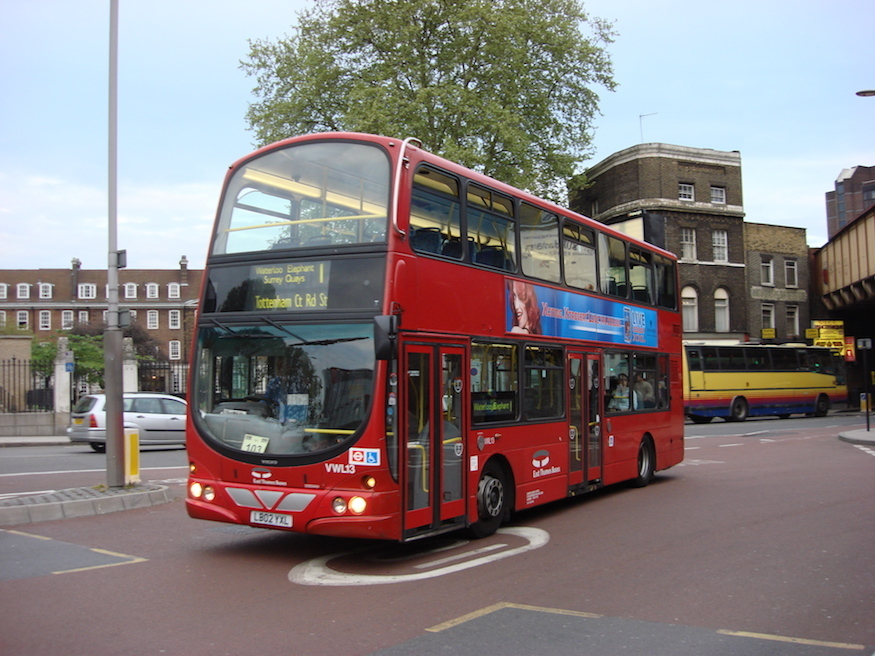
London's number 1 bus route glides between Tottenham Court Road and Canada Water, via the Elephant. It's first by number but not by precedence.
The very first bus route opened on 4 July 1829. The horse-drawn service carried paying passengers between the Yorkshire Stingo pub in Paddington and the Bank of England in the City. The full trip cost one shilling, and took about 40 minutes. Heres the route.
This route effectively chose itself. Tight licensing regulations meant that hackney carriages had a monopoly in much of central London. This forced Shillibeer to operate on the city's margins, and the obvious route was via the 'New Road' (now Marylebone Road and its continuations) to the north of the city.
You wouldn't want to miss your bus. Only four ran per day, in each direction. This led to overcrowding in the early days. Reports of would-be passengers running after the bus, hoping to squeeze on at the next stop, were common.
As the only bus route, it didn't carry a number (those were not introduced until 1906). The omnibuses were, however, decked out in a distinctive green and yellow livery, with conductors in smart blue uniforms. The vehicles must have been quite a sight on London's roads.

The man behind this venture was George Shillibeer, a coach maker who'd had success with a similar scheme in Paris. Before Shillibeer, coaches and carriages could only carry a handful of people. The first London buses, by contrast, could accommodate up to 22 people, all inside.
Not everyone was chuffed. Traditional coach drivers begrudged the loss of trade and embarked on a war of words with Shillibeer. His omnibuses were branded as dangerous, and frightening to other road users. There were even claims that drivers would ply for passengers off-route, in the manner of a hackney carriage. Shillibeer repeatedly took his competitors to court, charging them with deliberately obstructing, delaying and even colliding with his vehicles.

The omnibuses proved very popular. When licensing rules were relaxed in 1832, the company spread out to other routes. But increasing competition meant that profits were hard to come by. Shillibeer was often in debt, and even bankrupted. He eventually retired to Brighton where he set up a funeral coach company.

The road in Marylebone where his horses and coaches were stabled is now known as Shillibeer Place in his honour.
Remarkably, attempts were made to introduce a horseless omnibus around the same time. Various types of steam-powered vehicle were trialled in the 1820s and 30s, but never caught on. Read about that story here.
Black and white images courtesy of the British Newspaper Archive. Copyright the Board of the British Library.




